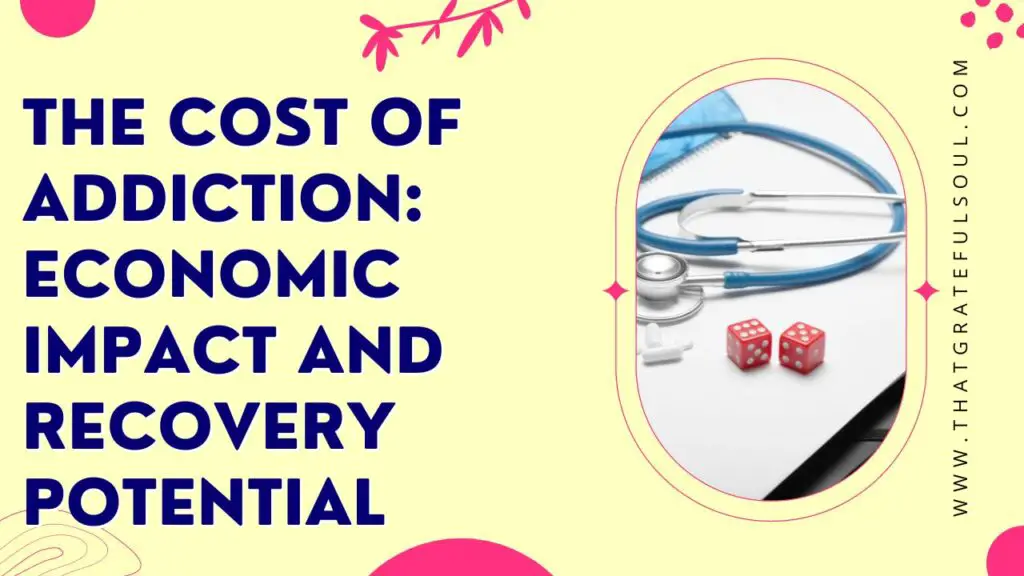In the realm of addiction treatment, understanding the economic impact of addiction is crucial for policymakers, healthcare professionals, and individuals seeking recovery.
Substance abuse and addiction not only take a toll on individuals and their families but also have far-reaching economic consequences.

-
Save
Table of Contents
The Economic Burden of Addiction
This article explores the cost of addiction, delving into its economic impact and the potential for recovery.
1. Healthcare Costs and Treatment Expenses
Addiction places a substantial burden on healthcare systems and individuals alike. The costs associated with medical treatment, including emergency room visits, hospital stays, detoxification, and rehabilitation programs, can quickly escalate.
According to the National Institute on Drug Abuse (NIDA), the economic burden of substance abuse in the United States alone exceeds $600 billion annually, with healthcare expenses accounting for a significant portion of this cost.
2. Productivity Loss and Workforce Impact
The impact of addiction extends beyond healthcare costs and directly affects productivity in the workforce. Substance abuse can lead to decreased productivity, absenteeism, workplace accidents, and impaired job performance.
The U.S. Department of Labor estimates that substance abuse costs employers approximately $81 billion each year due to lost productivity and missed workdays.
3. Criminal Justice System Costs
Addiction often contributes to criminal behavior, leading to encounters with the criminal justice system.
Substance-related crimes, including possession, drug trafficking, and driving under the influence, place a significant burden on law enforcement, courts, and correctional facilities.
The costs associated with arrests, prosecutions, incarceration, and rehabilitation programs for substance-involved offenders are substantial and further contribute to the economic impact of addiction.
Recovery Potential and Economic Benefits
1. Treatment Effectiveness and Cost Savings
Investing in addiction treatment and recovery programs has proven to yield substantial economic benefits.
Research indicates that for every dollar spent on addiction treatment, there is a potential cost savings of $4 to $7 in healthcare expenses, criminal justice costs, and productivity gains.
Effective treatment interventions, including medication-assisted treatment, counseling, and behavioral therapies, can help individuals overcome addiction and reintegrate into society as productive members, reducing the burden on various economic sectors.
2. Employment and Economic Stability
Recovery from addiction opens doors to employment opportunities and economic stability.
Individuals in recovery are more likely to gain and maintain employment, contributing positively to the workforce and reducing the economic impact associated with unemployment and welfare dependency.
Studies show that sustained recovery is associated with increased employment rates, higher wages, and reduced reliance on public assistance programs.
3. Prevention and Early Intervention
Prevention and early intervention efforts play a vital role in reducing the economic impact of addiction.
By addressing risk factors, promoting education, and implementing evidence-based prevention strategies, society can save significant financial resources in the long term.
Prevention initiatives aimed at youth, such as school-based programs and community outreach, have shown promise in reducing substance abuse rates and preventing future addiction-related costs.
Conclusion
In conclusion, the economic impact of addiction is substantial and wide-ranging, affecting healthcare systems, workplaces, and the criminal justice system.
Substance abuse contributes to increased healthcare expenses, reduced productivity, and significant costs within the criminal justice system.
However, investing in addiction treatment and recovery programs presents an opportunity for cost savings and economic benefits.
Effective treatment interventions, coupled with prevention and early intervention efforts, can mitigate the economic burden of addiction.
By supporting individuals in their journey to recovery, promoting employment opportunities, and implementing prevention strategies, we can alleviate the economic impact of addiction and foster healthier communities.
References:
- National Institute on Drug Abuse (NIDA). Drug and alcohol misuse and addiction: Health economic costs.
- Substance Abuse and Mental Health Services Administration (SAMHSA). (2016). Facing addiction in America: The surgeon general’s report on alcohol, drugs, and health.
- U.S. Department of Labor. (n.d.). Drug-free workplace cost estimator.
-
Save

